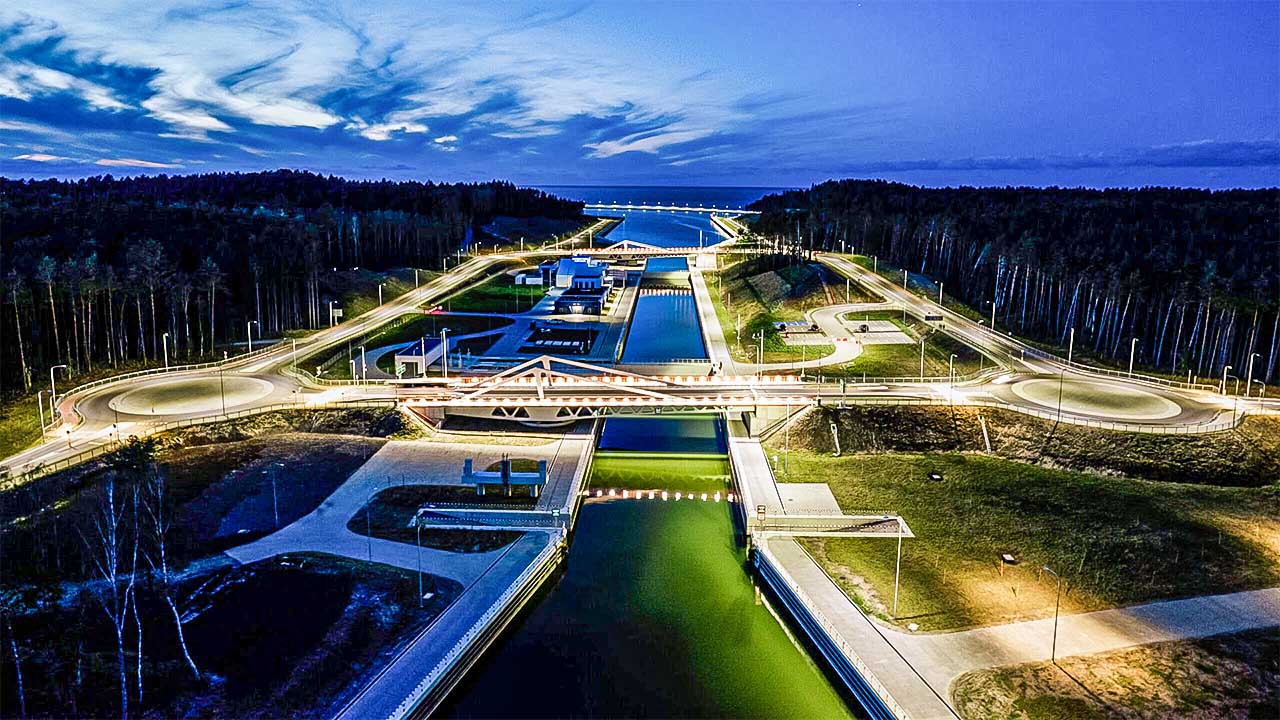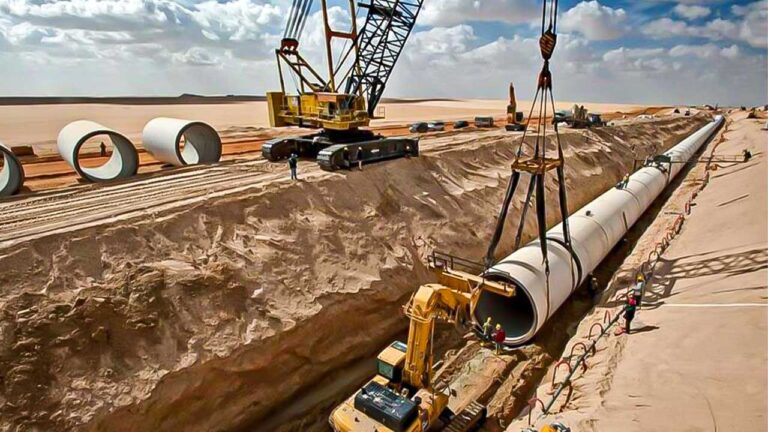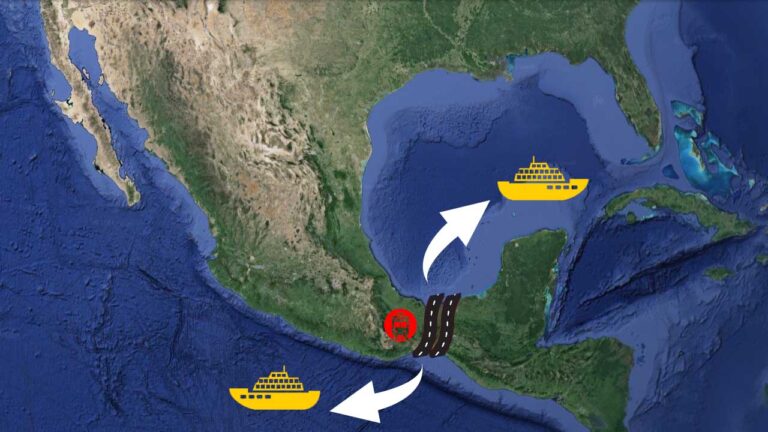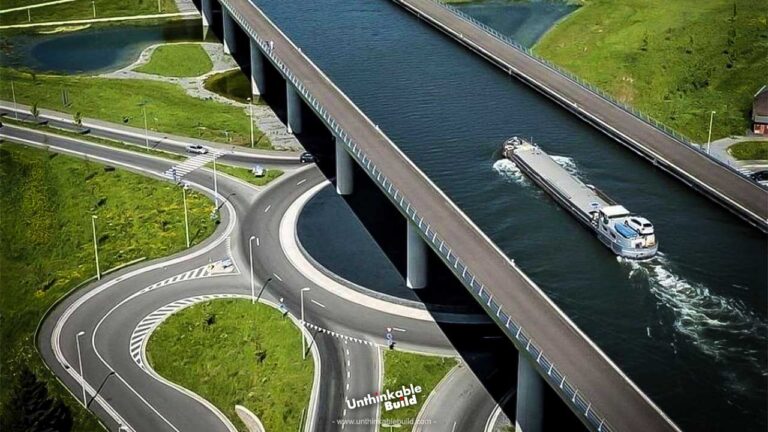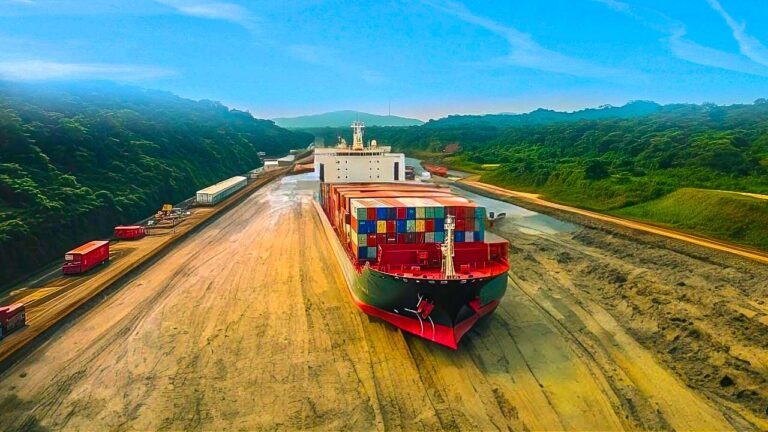Why Russia Is Not Happy with Europe’s Vistula Spit Canal
Nestled in the heart of Europe, Poland isn’t just a place on the map—it’s a powerhouse of history and influence. A land that’s not just a crossroads, but THE crossroads between the wild forests of the West and the bustling sea lanes of the Atlantic, all connected to the fertile plains of the East. It’s like the beating heart of trade, culture, and military might.
Elblag city is located in the northern part of Poland, approximately 55 kilometers southeast of Gdańsk. It serves as a port city on the river Elblag, which flows into the Vistula Lagoon about 10 kilometers to the north. Elblag has access to the Baltic Sea via the Russian-controlled Strait of Baltiysk.
Elblag lies just under 50 kilometers southwest of the Kaliningrad border, home to Russia’s sole ice-free port. Previously, ships bound for Poland’s port had to navigate Russian-controlled waters, often subject to closures or tolls imposed by Russia, leaving Poland uncomfortably reliant on its less-than-ideal neighbor. However, weary of enduring these challenges, Poland sought a solution. Thus, in 2019, officials embarked on the construction of the Vistula Canal, providing Polish ships with an alternative route, bypassing the Russian strait altogether. This ambitious $450 million project drew fire from Russia, underscoring the complex dynamics between the two nations.
Behold the Vistula Spit canal, a marvel etched into the fabric of Poland’s coastal landscape. Like a hidden melody, it weaves its way through the land, connecting the Vistula Lagoon to the vast expanse of the Gulf of Gdansk. This engineering wonder serves as a lifeline for ships, offering them passage to the port of Elblag and the embrace of the Vistula Lagoon, all while bypassing the tumultuous waters of the Russian-controlled Strait of Baltiysk.
Also Read: Navi Mumbai Airport: A Game-Changer for India
This aquatic corridor welcomes vessels with open arms, accommodating ships of various sizes and drafts. Its birth in February 2019 heralded a new era of maritime connectivity, culminating in a grand inauguration on September 17, 2022.
The Vistula Spit canal, and officially designated as the Nowy Swiat ship canal, is a remarkable waterway traversing the Polish segment of the Vistula Spit. This engineering marvel establishes a secondary link between the Vistula Lagoon and the Gulf of Gdansk, providing ships with an alternative route to access the Vistula Lagoon and the port of Elblag without depending on the Russian-controlled Strait of Baltiysk.
By circumventing this route, ships save a considerable 100 kilometer journey. Construction commenced in February 2019, resulting in a canal stretching 1,305 meters in length. It accommodates ships with a draft of up to 4 meters, a length of up to 100 meters and a beam of up to 20 meters.
Yet, the canal’s creation was not without its challenges. Like a tempest on the horizon, objections loomed from the Russian Federation. Concerns of environmental impact and security threats cast shadows over the project, threatening to derail its course. But Poland stood resolute, navigating through turbulent waters to realize its vision.
Costing a staggering $450 million, this endeavor was a testament to perseverance and ingenuity. And as the canal continues to evolve, with plans for an artificial island to nurture avian life in the Vistula Lagoon, its story unfolds like a saga, resonating with the spirit of exploration and stewardship.
The labor commenced with the excavation of a 2 kilometer wide swath of land surrounding the lagoon, while reinforcing the remaining slopes with geogrid synthetic material and topsoil to deter erosion. Instead of removing the excavated sand, workers ingeniously repurposed it to form a sprawling artificial island spanning five kilometers, providing a sanctuary for nesting birds.
Simultaneously, the construction of breakwaters began, emerging as steadfast structures protruding into the water to mitigate swells and tides. Driven sheet piles anchored the base, acting as vertical steel retaining walls, while over 10,000 interlocked concrete blocks, varying from 2 to nearly 10 tons, fortified the edifices. Specially designed with a central hole to alleviate water pressure and enhance stability, these blocks were swiftly and accurately installed at a rate of up to 100 per day. Upon completion, the western breakwater extended over 500 meters, with its eastern counterpart surpassing a kilometer.
Numerous studies have delved into the annual water dynamics of the Vistula Lagoon. As per Silicz’s calculations in 1975, the primary water exchange predominantly takes place through the Strait of Baltiysk. Presently, the Vistula Lagoon derives 85% of its annual water influx from the Baltic Sea.
Given the discrepancy in water levels between the bay and lagoon, the canal’s lock serves as a nautical elevator, seamlessly raising and lowering vessels for smooth passage through the channel. The Vistula Canal lock comprises a 270 meter system housing four gates, each weighing approximately 160 tons. These gates maneuver along rails using a system of ropes. As a vessel enters the lower section of the lock, the initial steel gate closes, halting water from escaping the chamber. Subsequently, the upper gates open, allowing water to flow into the lower section, elevating the ship to the upper canal level. Once equilibrium is reached, the subsequent set of gates unlocks, permitting the vessel to traverse to the opposite side.
Furthermore, the project accommodates another mode of transportation—a road system featuring two swing bridges positioned over the lock. These bridges pivot approximately 90 degrees around a central axis, facilitating the passage of vessels through the Vistula Canal as they alternately swing open.
Despite the inauguration of the canal in 2022, the dredging of a channel from the canal to the port of Elblag remains unfinished. Consequently, larger vessels are still unable to access the city’s port.
Future developments are underway as further enhancements are planned for the canal’s continued evolution. Positioned between the villages of Skowronki and Przebrno, at the site of the abandoned settlement named Nowy Swiat, the canal bears its official name in homage to its historical roots.
Also Read: US Economy after the Francis Scott Key Bridge Collapse
The project faces significant pressure from propagandistic articles circulating on websites known for promoting the Kremlin’s agenda. These articles seek to sabotage the construction of the navigation canal and thwart any progress made by the Polish government in that regard, ultimately aiming to hinder the project’s completion.
Dr. Agata Błaszczyk, a marine biologist, highlights the concerning accumulation of phosphorus in the sediments at the lagoon’s bottom. This phosphorus mainly originates from industrial wastewater, animal farming sewage, and agricultural runoff in the Elbląg area. Such accumulation exacerbates eutrophication within the nearly enclosed lagoon, leading to intense cyanobacteria blooms. Consequently, the lagoon exhibits a distinctive greenish hue compared to the surrounding Baltic Sea due to algal proliferation.
Russian propaganda suggests that the construction of the navigation canal across the Vistula Spit holds no economic or security benefits for Poland. According to analyses found on Russian websites, Poland’s investment in the canal is deemed futile and potentially harmful. These narratives assert that Poland will not reap rewards from the investment and may even face negative repercussions. Critics argue that the canal’s infrastructure will not accommodate larger vessels, effectively limiting its utility.
Consequently, Russia is portrayed as the sole beneficiary of the new waterway, given its adequate fleet. Additionally, skeptics claim that the canal will primarily facilitate the transportation of Russian coal and serve as an alternative route for Russian military movements.
The canal was officially inaugurated on 17 September 2022, the 83rd anniversary of the Soviet invasion of Poland in 1939 during World War II. The ceremony was attended by Polish President Andrzej Duda and Prime Minister Mateusz Morawiecki, marking a significant milestone in maritime connectivity.
With the inauguration of Vistula Spit Canal, Poland symbolically reaffirms its independence and national significance. While the canal is now operational, additional enhancements are slated for its full completion.
Anticipated future allowances for small ships and yachts will enhance maritime traffic, underscoring the canal’s importance.
In essence, man-made canals such as the Suez and Panama offer direct shortcuts through land masses, significantly reducing time and costs associated with trade. These canals not only facilitate commerce but also serve as strategic assets, enhancing connectivity and bolstering economic and geopolitical interests on a global scale.
The Vistula Spit Canal stands as a pivotal stride towards Poland’s economic expansion, navigational self-reliance, and bolstered regional influence.

